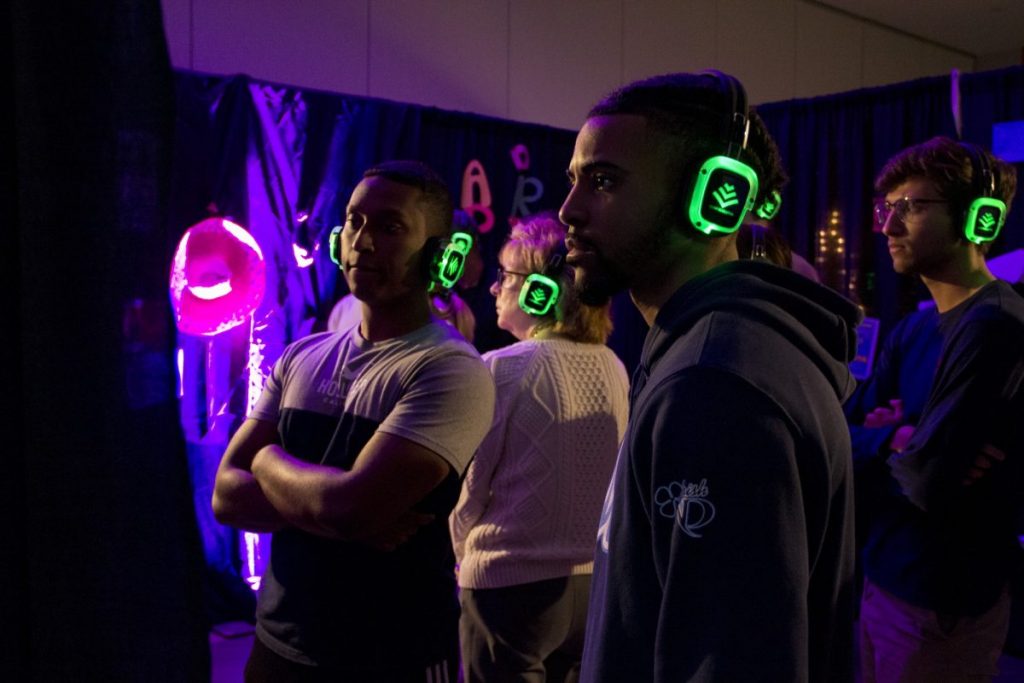
This past week, the University of Miami hosted its annual Tunnel of Oppression in the Shalala Student Center ballrooms. The popular student event sought to bring light to the array of challenges various groups face around the world and, hopefully, inspire change.
An interactive, sensory-based exhibit guided by audio from news sources and international media, the tunnel was divided into a handful of rooms that each represent a different form of oppression. Topics included immigration, able-bodiedness, environmental sustainability, gender discrimination, racism, LGBTQ+ discrimination and mental health.
The event is entirely student-organized, with the exhibit being built, researched and hosted by a combination of general volunteers and student organizations such as SpectrUM, UHRL and the UM Butler Center for Service and Leadership.

Sayesha Reddi, a junior microbiology/immunology and architecture major, is one of the many students who helped bring this year’s installation to life. A co-chair and student organization liaison for the Tunnel of Oppression, she expressed why this event in particular is important to continue.
“Tunnel is an opportunity for any student on campus to experience and learn about different forms of oppression [that] they may not have been through,” she said.
Much of the content covered was not entirely centered on the United States, with discussions on LGBTQ+ discrimination being covered in regards to the Caribbean and the environmental sustainability efforts of foreign nations being mentioned. Though an extremely diverse campus, many UM students have not had the first-hand experiences of being in one of these countries to witness the horrors that take place.
Nicolette Schurhoff, a sophomore student organization liaison for the event, gave insight about how important it is for the entire university to be aware of the various forms of oppression around the globe. She expressed how pertinent it is for students to call out others engaging in hate speech and microaggressions.
“Every form of oppression affects a different population. It’s every student’s responsibility to speak out when they see it,” Schurhoff said.

The exhibit explained in detail ways that students can call out oppression and stop it from occurring on the university’s campus. Tunnel focused on doing so by providing everything from positive ways to interact with friends or family dealing with mental health issues to giving examples of the commonly misunderstood microaggressions.
Brandon Martin, who has been a Tunnel student organization liaison for the past two years, explained why Tunnel is such an important event for UM specifically.
“As a private school with many affluent individuals, it can be difficult to speak about injustice and have an individual care,” said Martin, who is studying mechanical engineering and Portuguese. “By showing them in a creative way, it is a non-chastising way of getting individuals involved. Rather, it is an educational experience so then they can continue to go on and make a change in the community.”
There are multiple ways to get involved in Tunnel of Oppression and its leaders are always accepting general volunteers. These volunteers carry out various responsibilities such as building, set up, tear down and day-off opportunities.
Co-chair Raddi recalled some of her favorite parts of volunteering with Tunnel.
“My favorite part of Tunnel is how I relearn the topics that are in the tunnel every year,” she said. “I feel like I come out a kinder, more informed person.”





